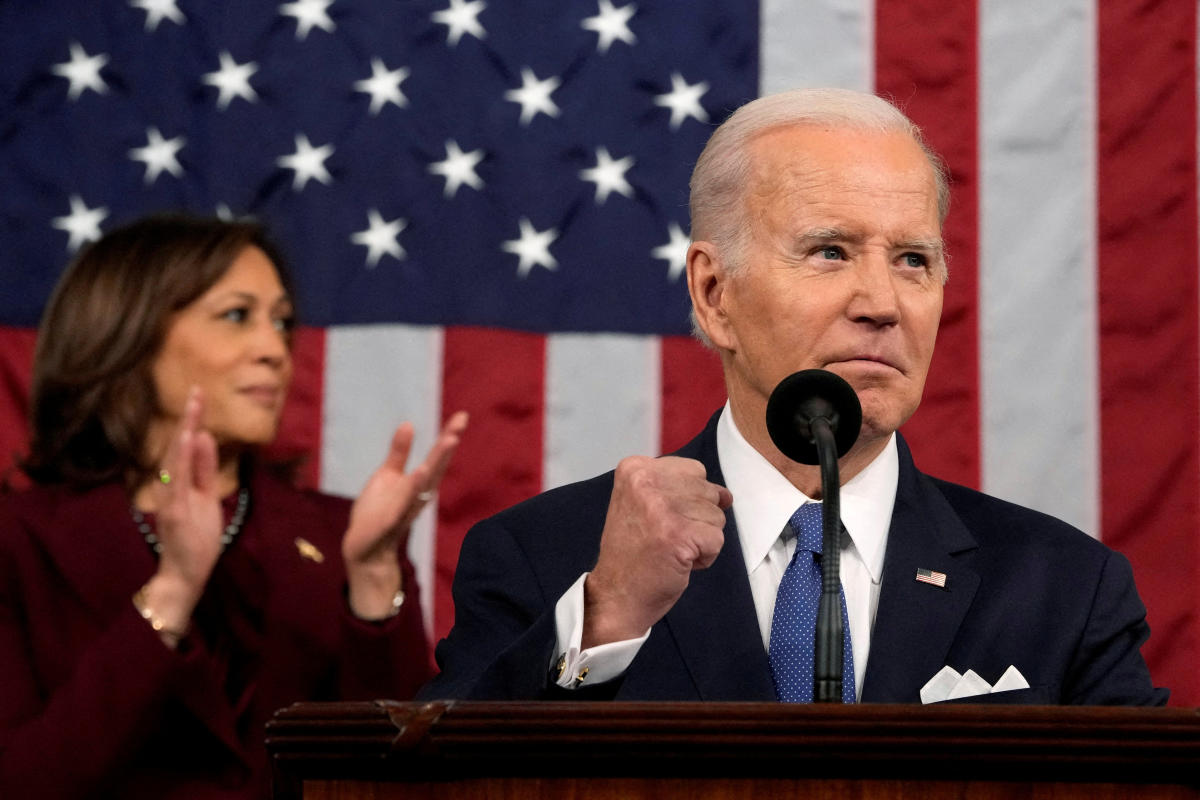With many of the 2017 Republican tax cuts set to expire after next year, the White House and Congress are already laying the groundwork for a huge battle over the tax code. On Friday, President Joe Biden’s top economic adviser laid out the administration’s principles for the fight ahead.
On the heels of a report from the Congressional Budget Office saying it would cost more than $4 trillion over a decade to extend the 2017 tax cuts, Lael Brainard, director of the White House National Economic Council, said Friday that the Biden plans to reduce the deficit by raising taxes on corporations and the wealthy, while maintaining his pledge to not raise taxes on American households earning less than $400,000 a year.
“We have a major economic policy decision that lies ahead: whether to return to the trickle-down policies of the past or forge ahead with a different approach, the president’s approach to grow the economy from the middle out and the bottom up,” Brainard said at an event hosted by the Hamilton Project at the Brookings Institution. “The expiration of Trump’s 2017 tax package next year will put tax fairness front and center. Do we want a tax system that favors the wealthy or the middle class?”
Brainard criticized the Republican tax law, arguing that it had made the tax system less fair, hurt the country’s fiscal health and failed to deliver the promised economic benefits.
She also laid out five guiding principles for the administration’s approach to tax policy in its potential second term:
* Pursue a tax system that rewards work, not wealth. Biden wants to extend or renew tax breaks for middle- and working-class households, including an enhanced child tax credit and continued subsidies for health insurance. Tax cuts for wealthy households would be allowed to expire. “Our tax system should be fair,” Brainard said. “It should reward work, not wealth. It should give tax cuts to working- and middle-class families to give them a fair shot while asking the wealthiest households to pay their fair share.”
* Raise revenue and fully pay for any tax cuts that are extended. “The aging of the population directly increases fiscal pressures on programs that are the bedrock of financial security for Americans, and tax revenue must keep pace,” Brainard said.
* Ask more from companies. Biden would raise the top corporate income tax rate to 28%, up from the current 21%, and the minimum corporate tax rate on large businesses would go to 21%, up from the current 15%. “Our tax system currently asks much less of corporations than it used to,” Brainard said. “In the 1950s, around 70% of our revenue came from labor income and 30% from corporate income. Today, around 90% comes from labor income and under 10% comes from corporate income. That doesn’t make any sense.”
* Help the IRS crack down on wealthy tax cheats and improve service. “We will extend the investment and oppose Republican efforts to rescind the IRA funding,” Brainard said, referring to $80 billion provided to the tax agency over 10 years through the Inflation Reduction Act.
* Avoid an international race to the bottom on tax rates. Biden wants to implement the global minimum tax negotiated by his administration and agreed to by more than 130 countries around the world. “Many of the world’s largest economies are already implementing this transformational agreement,” Brainard said. “We need to join them next year. The president’s proposal would implement the agreement and impose a 21% minimum tax on the foreign profits of the biggest multinationals.”
The bottom line: The debate over what could be major changes in tax policy in 2025 is heating up as the Biden administration lays out its plan to raise taxes on high-income households and corporations while maintaining and in some cases enhancing tax breaks for everyone else.


















:quality(85):upscale()/2024/11/13/919/n/1922564/cc0839716735141c6dab05.65024797_.jpg)




![Lil Uzi Vert – Chill Bae [Official Music Video] Lil Uzi Vert – Chill Bae [Official Music Video]](https://i.ytimg.com/vi/D7F42F_JM3U/hqdefault.jpg)
![Finesse2Tymes & Og Boo Dirty – Real Recognize Real [Official Music Video] Finesse2Tymes & Og Boo Dirty – Real Recognize Real [Official Music Video]](https://i.ytimg.com/vi/3xb4bl5PWF8/maxresdefault.jpg)
